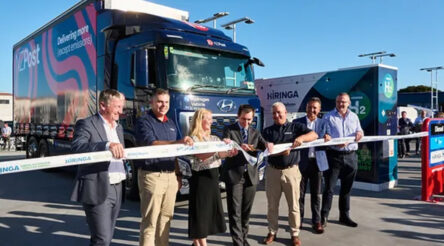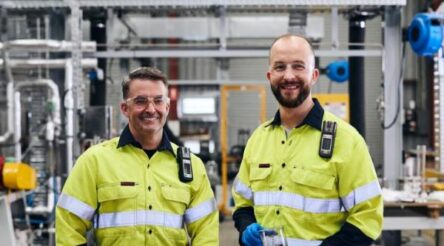Subscribe to our free @AuManufacturing newsletter here.
Augmented deposition another arrow to 3D printing’s quiver: a Q&A with Rize
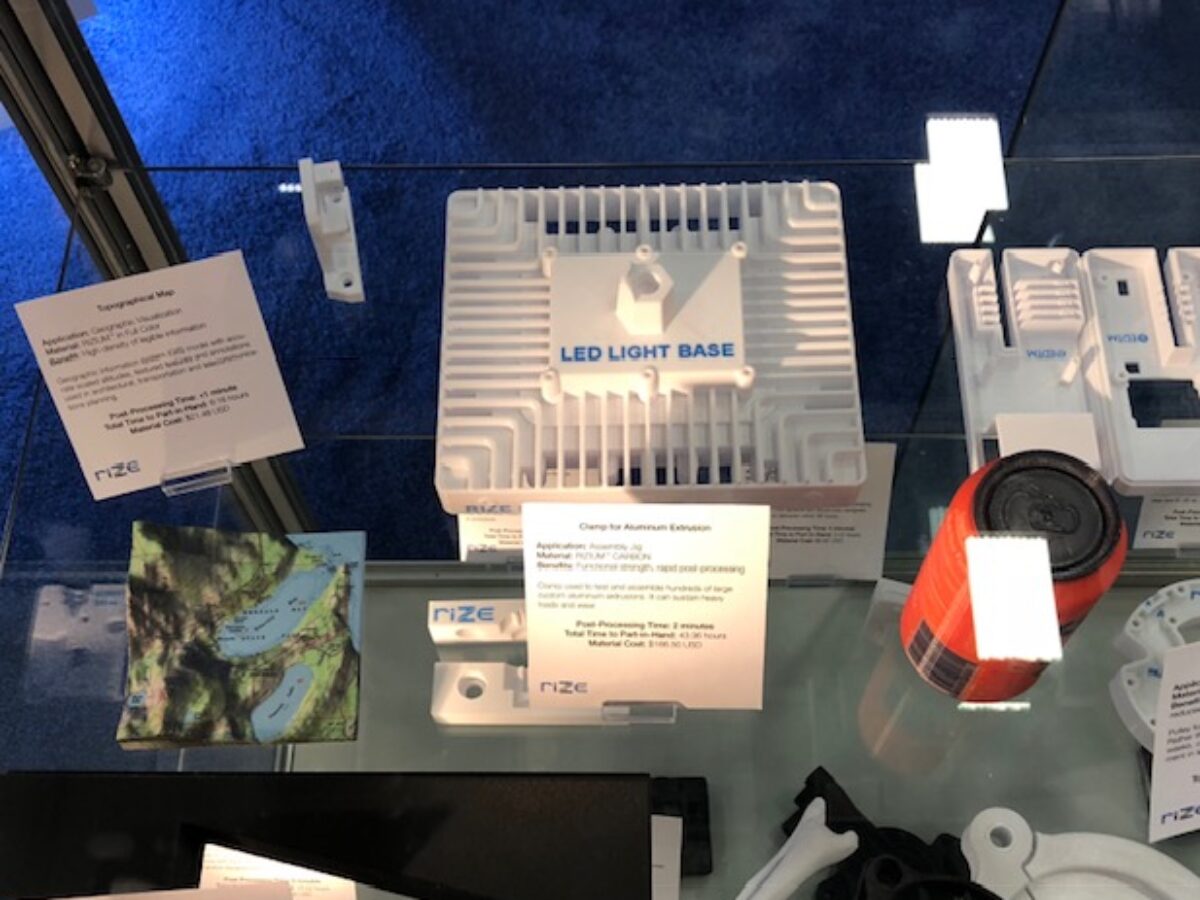
It’s not unusual to see companies invest in a 3D printer and then buy several more, finding out that different types of additive manufacture have different strengths and weaknesses, and that no one machine can do everything. The range of methods on offer has increased over time.
3D printing startup Rize has been shipping its machines for 14 months. They use a hybrid process called augmented 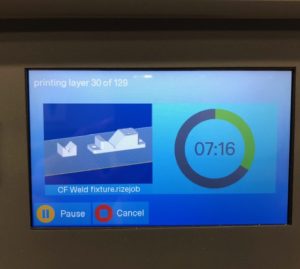 deposition, combining thermoplastic extrusion and jetting. The use of inks can speed up processing – creating a barrier between printed part and raft for easy separation, for example – as well as colour parts and mark them with a QR code for traceability.
deposition, combining thermoplastic extrusion and jetting. The use of inks can speed up processing – creating a barrier between printed part and raft for easy separation, for example – as well as colour parts and mark them with a QR code for traceability.
Brent Balinski spoke to Kishore Boyalakuntla, the company’s Vice President of Product, about what they contribute to the ever-expanding variety of additive manufacturing options.
@AuManufacturing: Tell us about what augmented polymer deposition does well, and what sort of situations it’d be a good solution for.
Kishore Boyalakuntla: It’s a hybrid process that combines extrusion and also ink-jetting into one. We call these inks functional inks because they have a purpose. For example, the release ink makes it very easy to remove the supports. And the colours are there for different functions. The colors are absorbed into the material and things like that.
One of the challenges of 3D printing is when you think of the cost, there’s the cost of the printer, which is a one-time cost. But then there’s a lot of labor that goes in pre-processing the part to print and a lot of labor post-processing the part after the print. So what this does is makes it easy to post-process. So something that might take somebody an hour and 75 dollars or 100 dollars per person per hour of labor to do it, with our thing it is a minute-and-a-half to two minutes most of the time. Some parts 10 minutes, maybe, if they’re very intricate.
@AuManufacturing: How does the ink layer allow parts to come free so easily?
Kishore Boyalakuntla: It’s a very integrated process between the printer, the software, and the materials. We jet the release inks between the raft and the part and the support and the part. So once the supports come off, you have a very smooth, beautiful surface.
@AuManufacturing: You’re using ink-jetting in 3D printing. Are you going up against HP, or is what you do entirely different?
Kishore Boyalakuntla: In the last one year and two months or so, I wouldn’t say we are competing with other 3D printing companies, because the customer use cases are so diverse and, frankly, the industry’s expanding so fast. So we are not in a competitive situation with anybody most of the time. Sometimes customers send us benchmarks, and we do the benchmarks, and we send them back, and they like it, and they decide to buy our printer.
So that’s how it works. More, I think, if you take a given customer and the range of applications of that customer, they probably need different 3D printers to get the job done, just like you need different subtractive manufacturing machines.
@AuManufacturing: One tool doesn’t do everything.
Kishore Boyalakuntla: Exactly. We have our value proposition around the IP, security, traceability.
And then the way we remove supports, the way we take care of the VOCs. So it’s a clean, safe printer. We do all those things. The customers like the cleanliness, the ease of use. Once you have a design, in three clicks you can print it, and in two minutes you take the supports out and there’s a part in-hand.
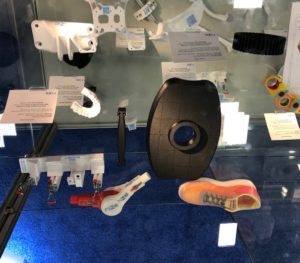 The printing time can be anywhere, depending on the part, let’s say 30 minutes to 15 hours. But once the printing is done, you post-process in two minutes, pre-process in two minutes. So when you think of the part in-hand, it’s just not the printing time.
The printing time can be anywhere, depending on the part, let’s say 30 minutes to 15 hours. But once the printing is done, you post-process in two minutes, pre-process in two minutes. So when you think of the part in-hand, it’s just not the printing time.
And the numbers we are hearing, it’s basically between two to three times faster in terms of print times and 2 to 3 X cheaper in terms of materials to get the same job compared to other industrial 3D printers.
@AuManufacturing: Of those 100 or so printers, what sorts of industries are they going to, and to what sorts of end uses?
Kishore Boyalakuntla: Consumer products, defense, medical, architecture, manufacturing floors. A lot of them on manufacturing floors for service parts and things like that. Industrial machinery’s another big one for us. Medical. A lot of medical companies are using this for the specific material properties. Those are the broad categories. Education is another big one.
@AuManufacturing: How did you select what feedstocks you offer?
Kishore Boyalakuntla: There’s chopped carbon, there’s something called Rizium One, which is basically cyclo olefin polymer. And we also do Rizium Black. And we also do a filament that’s specific for coloured parts that’s more translucent.
The plastics we chose? If you take the number of plastics in the world, there are some 60 thousand-plus plastics. The one we picked is optimal in the sense that it’s twice as strong as ABS, stronger than nylon, stronger than polycarbonate and polypropylene.
So in terms of decisions a customer has to make, it’s the least amount of decisions in terms of getting the parts out from prototyping, functional testing, and everything else.
@AuManufacturing: It covers the most ground.
Exactly.
@AuManufacturing: Tell me about how and why your main bit of IP was developed.
The founder of the company, Eugene Giller, has many, many years of experience in the 3D printing industry. Basically he worked with powders a lot, and he didn’t like the fact that powder flies everywhere and is unsafe. So he wanted to create a printer that’s industrial quality, that runs 24-seven. If you print the same part 30 times, the precision and tolerances are very, very good. And basically that’s easy to use. Thinking with the user in mind. We wanted to do the same thing with this particular printer. And he wanted to innovate on materials because he’s a material scientist.
So what you see is this: Ease of use, trusted parts, IP protection, traceability, no volatile organic compounds coming out of the printer. Its heater chamber is closed, so when the printing is happening you can’t even open it. And the form factor is desktop. It is industrial 3D printing in a desktop form factor. And that’s the basis of it.
@AuManufacturing: Tell me what the company’s ambitions are in the near future.
What we want to do is we want to solve customer problems, right? That’s our focus. That has been the focus at SolidWorks, so I came here and it’s the same focus. So we are looking at some very good customer applications and figuring out how to solve those problems for those customers. That’s number one.
Bringing new materials to market is something we are working on as well. We are getting ready to launch Xrize, our full color 3D printer, in the next few months. We want to partner with others in this industry because there are too many players. Customers need all kinds of solutions. Somehow I find in this industry, each company likes to think they are the only solution provider and they are very isolated. At SolidWorks we partnered with everybody, and everybody grew. I want to do the same with Rize, but I need to find the right people that think the same way. Somehow I’m not finding those partners right now, but I’m sure we will change that in time. So I want to create virtuous partnership and network cycles that help, most importantly, customers solve problems.
3D printing brings something unique. It gives you very low cost of entry into manufacturing, and it give you flexible manufacturing at the point of consumption. And those are incredibly important for customers to succeed. Imagine you are a start-up, and you want to do manufacturing small-scale. You don’t have to buy a 250 thousand dollar CNC. You can buy three of our printers at less than 100 thousand. Put them there, and now each one could be printing three different parts. And the expertise level necessary to do manufacturing is quite low.
So we want to provide a valuable option. Empower massive adoption into the marketplace. Work with partners to provide the right solutions to end customers. And bring the right offerings to solve customer problems.
@AuManufacturing is attending Solidworks World 2019 as a guest of Dassault Systemes.
Topics Manufacturing News Technology
@aumanufacturing Sections
Analysis and Commentary Awards Defence Manufacturing News Podcast Technology Videos









